
Are you wondering if Rustoleum can be used on wood? The short answer is yes, Rustoleum can be used on wood. However, there are some things you should consider before using Rustoleum on wood.
Firstly, Rust-Oleum recommends using a primer on high-tannin woods like cedar and redwood, as well as woods with lots of knots to prevent tannin from bleeding through. It’s also generally recommended to use a primer on all woods. This will ensure that the Rustoleum adheres properly and provides a smooth, even finish.
Additionally, it’s important to choose the right Rustoleum product for your project. Rustoleum offers a variety of products that are specifically designed for use on wood, such as Rustoleum 2X Ultra Cover Spray Primer. Using the right product for your project will help ensure that the Rustoleum provides the desired finish and protection for your wood surface.
Understanding Rustoleum
If you’re wondering whether you can use Rustoleum on wood, it’s important to understand what Rustoleum is and how it works. Rustoleum is a brand of spray paint that was originally designed for metal surfaces. It is known for its ability to prevent rust from forming on metal surfaces, as well as its durability and long-lasting finish.
Rustoleum is an oil-based spray paint, which means that it is made up of tiny particles of paint suspended in an oil-based solvent. When you spray Rustoleum onto a surface, the solvent evaporates, leaving behind a layer of paint that adheres to the surface. The paint then dries to form a hard, durable finish.
While Rustoleum was originally designed for metal surfaces, it can also be used on wood. However, there are a few things you need to keep in mind when using Rustoleum on wood. First, you should always use a primer before applying Rustoleum to wood. This will help the paint adhere to the wood surface and prevent it from peeling or chipping over time.
Second, you should be aware that Rustoleum can be a bit tricky to work with on wood. Because it is an oil-based paint, it can take longer to dry than other types of paint. This means that you may need to wait longer between coats or before handling the painted surface.
Finally, you should be aware that Rustoleum may not be the best choice for all types of wood projects. If you’re looking for a more natural, rustic finish, you may want to consider using a different type of paint or stain. However, if you’re looking for a durable, long-lasting finish for your wood project, Rustoleum can be a great choice.
Application on Wood
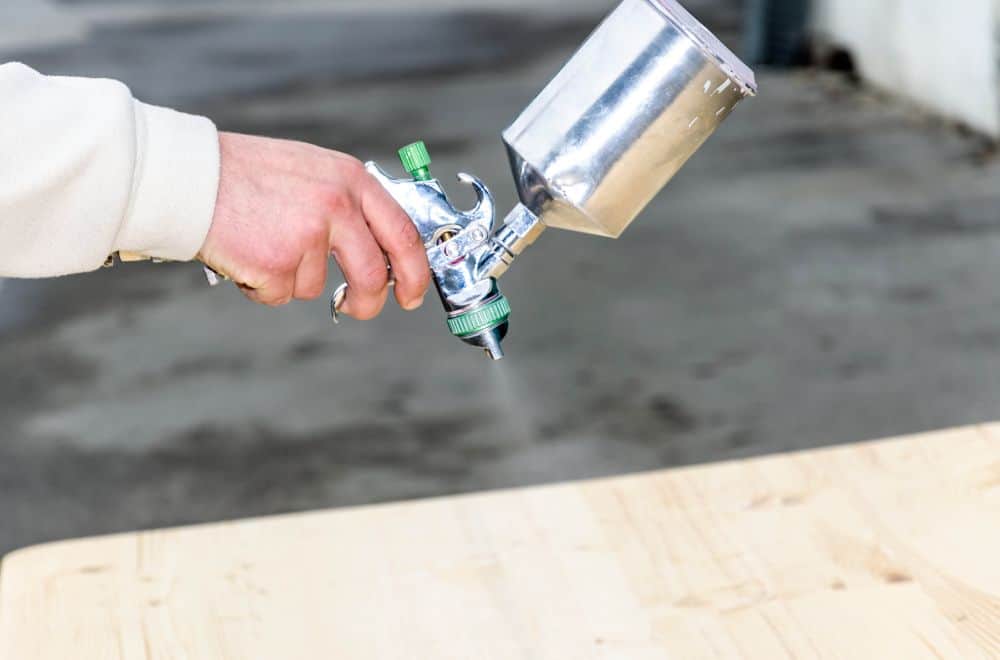
If you’re wondering whether Rustoleum can be used on wood, the answer is yes! Rustoleum enamel paint is an excellent choice for painting wood surfaces. Here’s how to apply Rustoleum on wood:
Preparation Process
Before you start painting, you need to prepare the wood surface. This process involves cleaning and sanding the wood to remove any dirt, dust, or debris. Once the surface is clean and dry, apply a coat of oil-based primer to ensure that the Rustoleum adheres properly. If you’re painting high-tannin woods like cedar and redwood or woods with lots of knots, Rustoleum recommends using a primer to prevent tannin from bleeding through.
Application Process
Once the primer has dried, it’s time to apply the Rustoleum. Shake the can well before use and test the spray on a small, inconspicuous area to ensure that the color and finish are what you want. Hold the can about 8-10 inches away from the surface and spray in a sweeping motion. Apply multiple thin coats, waiting a few minutes between each coat, until you achieve the desired coverage. Be sure to follow the manufacturer’s instructions for best results.
Drying Time
After you’ve finished painting, allow the Rustoleum to dry completely before using or handling the wood. The drying time can vary depending on the temperature and humidity, but it usually takes about 24 hours to dry to the touch and 7 days to fully cure. Avoid exposing the painted wood to moisture or extreme temperatures during the drying process.
In summary, Rustoleum can be used on wood surfaces with proper preparation and application. Follow the steps outlined above for best results and enjoy your newly painted wood surfaces!
Benefits of Using Rustoleum on Wood
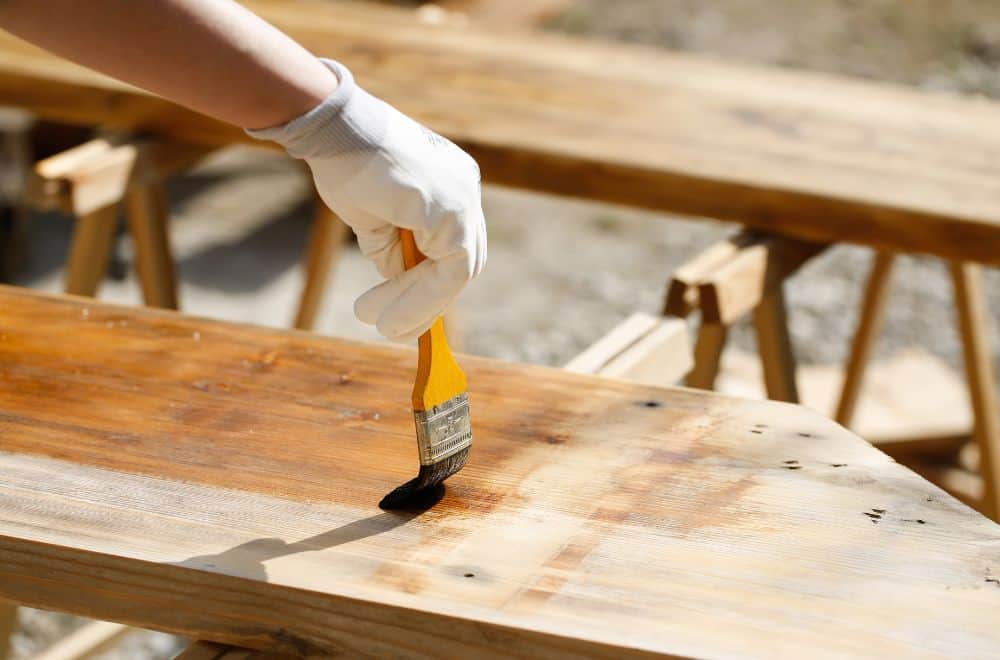
If you are wondering whether Rustoleum can be used on wood, the answer is yes. In fact, there are several benefits to using Rustoleum on wood. Here are a few of them:
Protection
One of the primary benefits of using Rustoleum on wood is that it provides excellent protection. Rustoleum enamel paint is expertly formulated to protect various surfaces from the harsh weather elements that typically characterize the outdoor environment. This protective coat can help prevent your wood from rotting or warping, which can extend its lifespan.
Durability
Another benefit of using Rustoleum on wood is that it is incredibly durable. Rustoleum enamel paint dries to form a hard, often glossy finish that is resistant to chipping, fading, and peeling. This means that your wood will look great for years to come, even with regular use.
Versatility
Rustoleum can be used on a variety of surfaces, including wood, metal, concrete, ceramic, vinyl, porcelain tiles, and laminate. This versatility makes it an excellent choice for DIY painters and those who are involved in home improvement projects.
Easy to Use
Finally, Rustoleum is incredibly easy to use. It comes in a spray can, which makes it easy to apply evenly to your wood surface. Just remember to prepare the wood surface well by cleaning, sanding, and then applying a coat of oil-based primer first.
Overall, using Rustoleum on wood is an excellent choice if you want to protect and enhance the look of your wood surface. With its excellent protection, durability, versatility, and ease of use, Rustoleum is a top choice for DIY painters and home improvement enthusiasts alike.
Potential Drawbacks
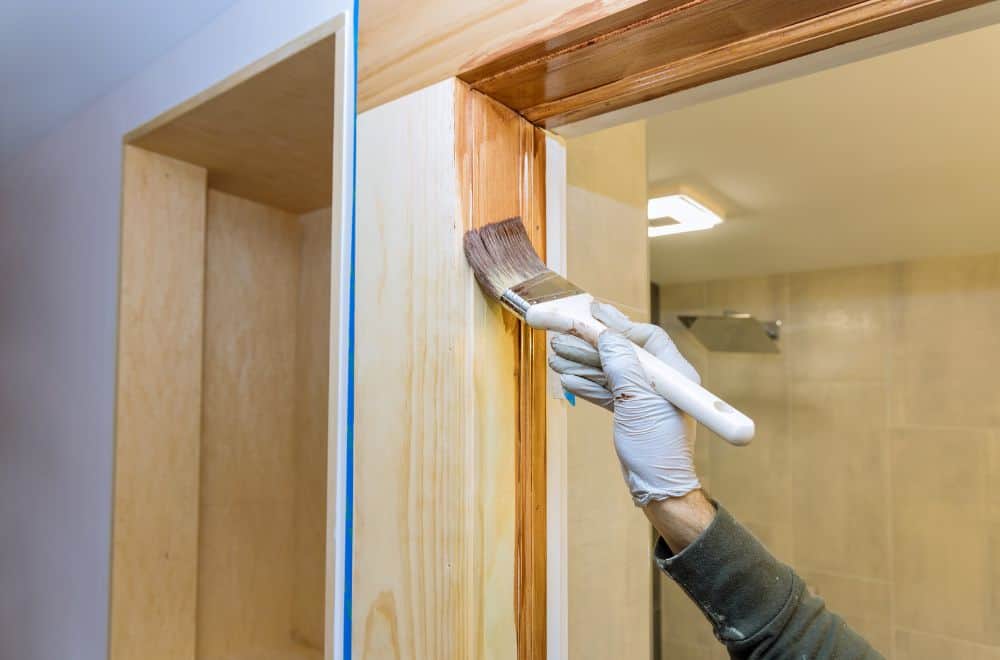
While Rustoleum can be a great choice for painting wood, there are some potential drawbacks you should be aware of before using it on your project.
Longer Drying Time
One of the biggest drawbacks of Rustoleum is its longer drying time compared to other wood paints. It can take up to 24 hours for the paint to fully dry, which can be frustrating if you need to use the painted surface soon after painting it. However, this longer drying time can also be an advantage since it allows the paint to fully adhere to the wood, resulting in a more durable finish.
Strong Odor
Rustoleum is an oil-based paint, which means it has a strong odor. If you are sensitive to strong smells, you may want to avoid using Rustoleum or make sure you use it in a well-ventilated area. It’s also important to note that the fumes from Rustoleum can be flammable, so make sure to keep it away from any open flames or heat sources.
Requires Proper Preparation
To get the best results with Rustoleum on wood, you need to properly prepare the surface before painting. This includes cleaning the wood, sanding it to create a smooth surface, and applying a primer. If you skip any of these steps, the paint may not adhere properly to the wood, resulting in a less durable finish.
Limited Color Options
While Rustoleum offers a wide range of colors for their spray paint, their selection of colors for their wood paint is more limited. If you are looking for a specific color, you may need to look for another brand of paint or consider mixing colors to achieve the shade you want.
Not Ideal for High-Traffic Areas
While Rustoleum is a durable paint, it may not be the best choice for high-traffic areas like floors or stairs. The paint can chip or scratch under heavy use, which can be unsightly and require touch-ups. If you need to paint a high-traffic area, consider using a more specialized paint designed for that purpose.
Safety Measures When Using Rustoleum
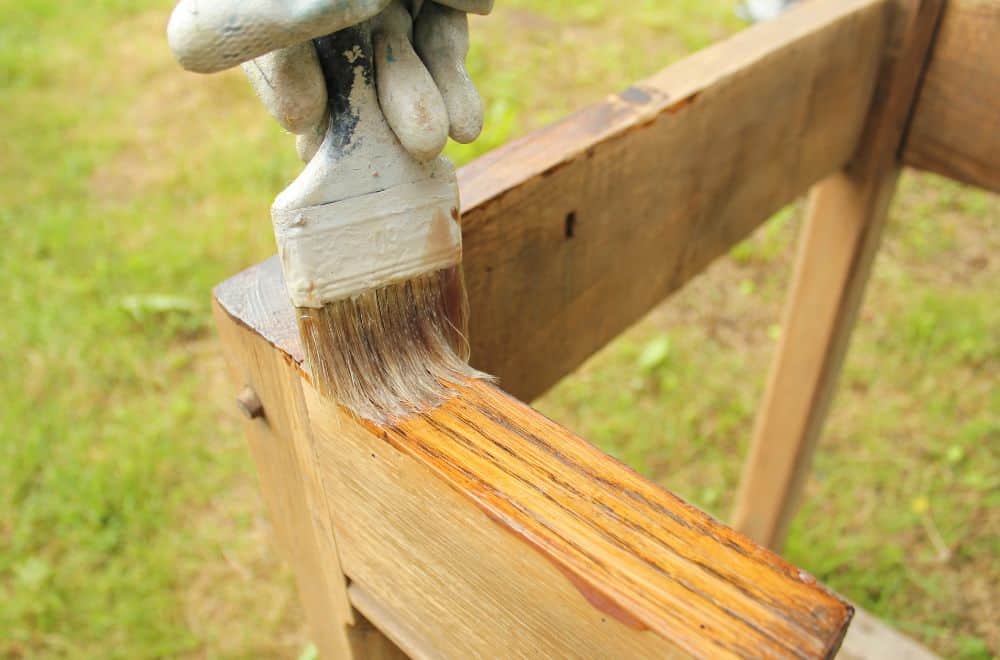
When using Rustoleum on wood, it is important to take safety measures to ensure that you are not exposing yourself to any harmful chemicals or causing any damage to yourself or your surroundings. Here are some safety measures that you should take when using Rustoleum on wood:
Wear Protective Gear
When using Rustoleum, make sure that you wear protective gear such as gloves, goggles, and a mask. This will help to protect your skin, eyes, and lungs from any harmful chemicals that may be present in the Rustoleum.
Work in a Well-Ventilated Area
It is important to work in a well-ventilated area when using Rustoleum. This will help to ensure that any fumes that are released during the application process are properly ventilated and do not accumulate in the air.
Follow the Instructions Carefully
When using Rustoleum, it is important to follow the instructions carefully. This will help to ensure that you are using the product correctly and that you are not causing any damage to yourself or your surroundings.
Store the Product Properly
When you are not using Rustoleum, make sure that you store it properly. This will help to ensure that the product remains in good condition and that it does not become a hazard to you or your surroundings.
Dispose of the Product Properly
When you are finished using Rustoleum, make sure that you dispose of it properly. This will help to ensure that the product does not become a hazard to the environment or to other people.
Alternative Products for Wood
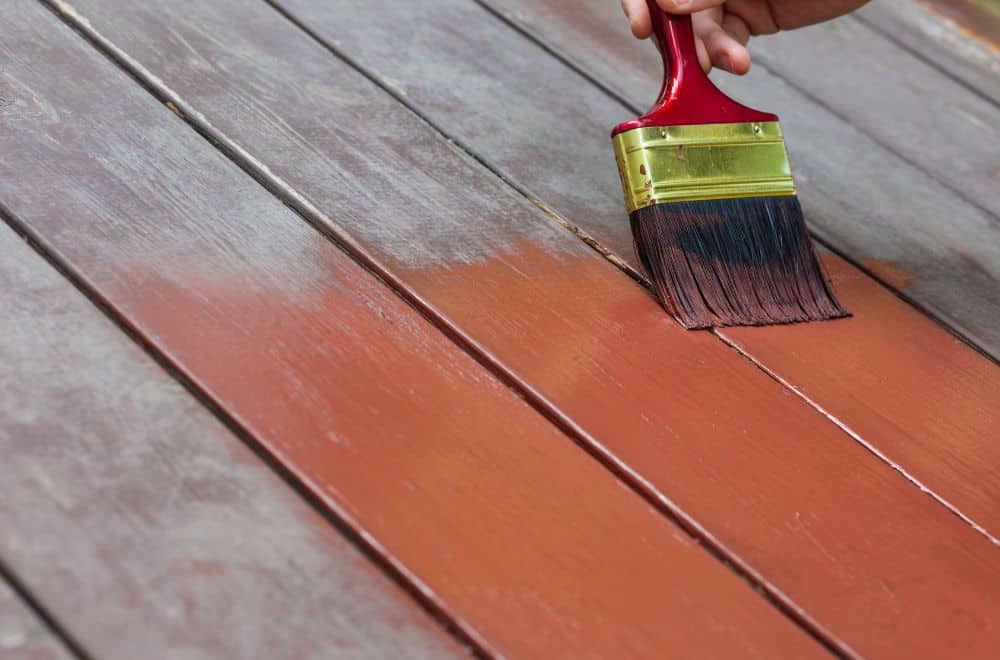
While Rustoleum can be used on wood, there are other products available that may better suit your needs. Here are a few alternatives to consider:
1. Wood Stain
If you want to enhance the natural beauty of the wood, wood stain is a great option. It penetrates the wood fibers to provide long-lasting color and protection. Wood stain is available in a variety of colors and finishes, so you can find the perfect match for your project.
2. Wood Sealer
If you want to protect the wood from moisture and UV rays, wood sealer is a good choice. It forms a protective barrier on the surface of the wood, preventing water and other liquids from penetrating. Wood sealer is available in clear and tinted finishes.
3. Polyurethane
Polyurethane is a clear, protective finish that can be used on wood floors, furniture, and other surfaces. It provides a durable, long-lasting finish that resists scratches and stains. Polyurethane is available in gloss, semi-gloss, and satin finishes.
4. Lacquer
Lacquer is a fast-drying, durable finish that can be used on wood furniture, cabinets, and other surfaces. It provides a high-gloss finish that is resistant to scratches and stains. Lacquer is available in clear and tinted finishes.
When choosing a product for your wood project, consider the level of protection you need, the desired finish, and the application method. Each product has its own unique properties and benefits, so be sure to choose the one that best meets your needs.
Frequently Asked Questions
What surfaces can Rustoleum be used on besides wood?
Rustoleum is a versatile spray paint that can be used on a variety of surfaces, including metal, plastic, and ceramic. It is also suitable for use on concrete, masonry, and brick.
Can Rustoleum enamel be used on previously painted wood?
Yes, Rustoleum enamel can be used on previously painted wood surfaces. However, it is important to ensure that the existing paint is in good condition and free from any cracks or peeling. If the old paint is in poor condition, it should be removed before applying Rustoleum enamel.
Can Rustoleum primer be used on wood?
Yes, Rustoleum primer can be used on wood surfaces. It is recommended to apply a coat of primer before painting with Rustoleum to ensure better adhesion and longer-lasting results.
What are the available Rust-Oleum wood paint colors?
Rust-Oleum offers a wide range of wood paint colors, including classic wood tones like oak, mahogany, and walnut, as well as bold and modern colors like navy blue, emerald green, and bright red.
Can Rustoleum clear enamel be used on wood?
Yes, Rustoleum clear enamel can be used on wood surfaces to provide a protective and glossy finish. It is recommended to apply a coat of primer before using clear enamel for better adhesion.
Can Rustoleum protective enamel be used on wood?
Yes, Rustoleum protective enamel can be used on wood surfaces to provide a durable and protective finish. It is recommended to apply a coat of primer before using protective enamel for better adhesion.